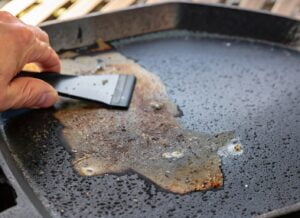“How to know when chicken is done” – this question plagues many home cooks, from the novice to the seasoned chef. The uncertainty of properly cooked chicken can lead to a culinary letdown or, worse, a health risk. Achieving that perfect balance where the chicken is fully cooked yet remains succulent is a common challenge in kitchens worldwide.
The key is reaching the ideal internal temperature, ensuring your chicken is both safe and delicious.
Are you tired of second-guessing yourself every time you cook chicken? Wondering if it’s undercooked or overcooked? You’re not alone. Many cooking enthusiasts face this dilemma, leading to less-than-ideal meals or concerns about food safety. In this comprehensive guide, I’ll share my expertise and provide you with foolproof methods to confidently determine when your chicken is perfectly cooked. You’ll learn about the importance of internal temperatures, visual cues, and how different cooking methods impact doneness. Plus, we’ll debunk common myths, ensuring your chicken is never dry or undercooked again. Get ready to master the art of perfectly cooked chicken and never fear the dinner table again!
Key Facts:
- Correctly assessing chicken doneness is crucial for preventing foodborne illnesses.
- The USDA recommends specific internal temperatures for different chicken cuts for safety.
- Visual cues, while helpful, are not as reliable as using a meat thermometer.
- Different cooking methods can affect the doneness of chicken.
- Resting chicken after cooking is essential for moisture retention and even cooking.
How to Know When Chicken is Done
When it comes to cooking chicken, ensuring it is fully cooked is crucial for both taste and health. But how can you be sure that your chicken is cooked to perfection? The answer lies in understanding the methods to determine chicken doneness.
Verify Safe Internal Temperatures
Identifying proper internal temperature is the most reliable technique for determining when chicken is fully cooked and safe to eat. According to USDA guidelines, chicken needs to reach 165°F across all cuts to effectively kill potentially harmful bacteria like Salmonella. For even doneness when roasting whole chickens or turkey, aim for 180°F in the thickest section, avoiding bones.
Master Proper Thermometer Use
Using an instant-read thermometer is simple with a few fundamental guidelines:
- Insert the probe into the thickest area of the breast, thigh, or drumstick, taking care to avoid hitting bone.
- For whole chickens or turkeys, test the innermost joint.
- Allow the thermometer reading to stabilize for 15-20 seconds before noting the temperature.
- Clean thermometers before and after each use to prevent cross-contamination.
- Calibrate thermometers routinely to ensure accuracy.
Following this best practice thermometer protocol guarantees all chicken cuts reach the FDA-recommended safe minimum internal temperature, vital for eliminating foodborne illness risk.
Evaluate Visual and Textural Cues
While thermometer readings reign supreme for assurance, peering at visual cues and giving chicken a prod can provide supplementary doneness clues:
Observe Inside and Out
- Examine the internal color – chicken should appear white or lightly pink with no redness.
- Cut into the thickest section and check juices run clear without traces of blood.
- The outer surface should be opaque all over without glossiness.
Feel for Firmness
Gently poke the chicken with your finger – it should spring back and feel firm versus mushy or limp. Also, prick the meat with a sharp knife – if juices spill out clear without traces of blood, it is likely cooked through.
When used in conjunction with a good thermometer, these doneness tests offer useful secondary signs. Allow chicken to rest at least 5 minutes before cutting into it to let juices redistribute and get the most accurate readings.
Adjust for Different Cooking Methods
From grilling and roasting to pan-frying and baking, technique adjustments are key for ideal doneness:
Grilling Chicken Requires Special Attention
The intense dry heat of grilling tends to blacken chicken exteriors before the insides fully cook. Modifying heat levels is crucial:
- Sear chicken quickly over direct high heat just until grill marks form.
- Move to indirect heat, shutting vents to maintain a temperature between 300-350°F until chicken internals hit 165°F.
This two-zone setup lets you char the outside without overcooking the inside.
Baked Chicken Demands Moisture Monitoring
Since oven air lacks humidity, baked chicken dries out easily. To prevent this:
- Roast chicken pieces on a rack over a baking pan. The elevation allows air circulation for even cooking.
- Brush chicken periodically with butter, oil, or juices to add moisture.
- Tent foil loosely over chicken during the last 15 minutes to seal in juices.
With attentive moisture management, baked chicken stays tender and succulent.
Going Beyond the Basics
Once you have the basics like thermometer use, visual tests, and cooking adjustments mastered, consider these pro tips:
- Invest in a leave-in thermometer for hands-free roasting and smoking sessions. The probe stays inside the chicken to track internal temp.
- Allow thicker cuts like bone-in breasts and whole chickens to rest for 10+ minutes before slicing to prevent juice loss.
- Double-check doneness in the innermost portion near the bones of whole chickens or turkeys. This section often lags.
- Purchase premium thermometers offering calibration, alarmed presets, and rotating, backlit screens for easy viewing. Accuracy matters immensely.
With the right tools and knowledge, you can expertly determine when chicken exhibits the glistening, tender hallmarks of perfection. Ditch the doubting and start serving juicy, flavorful chicken with total confidence.
FAQs About How to Know When Chicken is Done
What are reliable signs my chicken is cooked properly besides temperature?
Visual indicators like opaque white meat, firm yet moist texture when pressed, and clear juices provide useful secondary doneness clues. However, only an accurate thermometer reading can definitively confirm safe minimum internal temperature.
Is it safe to eat chicken that is still a little pink inside?
No, any sign of pinkness or blood indicates undercooking. Chicken cooked to a safe 165°F should show no pink hues. Residual blood vessels and hemoglobin cause red-pink staining in undercooked meat. When in doubt, continue cooking until all sections show white, opaque meat.
Why is the minimum 165°F temperature so important?
According to USDA research, rapidly heating chicken to 165°F effectively kills Salmonella, Campylobacter, and other dangerous bacteria that trigger foodborne illness. This temperature milestone is critical for neutralizing pathogens.
What if my grill or oven thermometer reading doesn’t match my meat thermometer?
Always defer to your instant-read thermometer over appliance thermometers. The internal probe delivers the most reliable reading for identifying proper chicken doneness. Appliance thermometers merely estimate ambient air temp versus actual protein temp.
Summary
Knowing precisely when chicken cooks to tender, juicy perfection without health risks boils down to monitoring safe minimum internal temperatures. While auxiliary visual and textural clues can supplement readings, only an accurate thermometer guarantees doneness. Adjust cooking methods and times to account for thicker cuts, bone conduction, and technique variables. With the proper tools and safety-first mindset, preparing perfectly cooked chicken is foolproof every time. What tips or tricks do you rely on most when evaluating chicken doneness? Please share any questions below!





